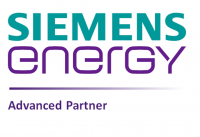An Overview of Regenerative Blowers
Posted in Uncategorised, on June 16, 2021 By Admin
When it comes to industrial vacuum systems, having the right regenerative blowers for your applications is key. They are typically used for drying purposes, but generally are required for all kinds of applications wherever consistent propelling, venting, and vacuuming functionalities are required.
How Do Regenerative Blowers Work?
Regenerative blowers have multi-vane impellers that rotate inside its chamber with the use of an electric motor. Air enters through the inlet and the force of the rotation pushes and compresses it. The process continues as the blower consistently takes in more air, compressing the air that enters and pushing the compressed air to the outer perimeters of its impellers. Finally, the fully compressed air is collected and directed to the outlet.
Aside from regenerative blowers, there are other kinds of blowers with key differences. Here is a quick explanation of the main differences:
- Positive displacement blowers work by transferring a set volume of gas from point A to point B, usually by filling a cavity/piston/lobe and physically forcing it from the suction to the discharge. This type of blower is good for flow rate of 1000+ CFM and a vacuum or pressure range of 15”HG vacuum or 15-20 PSI.
- This type of blower is suitable for larger flows and higher discharge pressure. It generates much more noise and takes up more space.
- Centrifugal blowers transfer gas by accelerating the gas through the volute of the blower by means of an impeller. The faster the speed the higher the pressure and flow, meaning that this type of blower works on velocity. Centrifugal blowers have a flow rate of 2000+ CFM, 17”HG vacuum range, and 22 PSI pressure range.
- This type of blower has limited discharge pressure but it is generally quiet and its flow can be throttled.
- Regenerative blowers work similarly to the two types of blowers above, to both the above, though its tolerance is so tight that it acts as a positive displacement blower, in that the internal slip (clearances) forces most of the gas through, plus, like a centrifugal blower, it uses the velocity of the impeller to give it pressure. The typical flow rate and vacuum or pressure range for this blower goes up to a maximum of 1500 CFM and 20”HG vacuum or 15 PSI.
- This blower generates very little noise and comes in a compact package. It is cost-efficient and highly adaptable.
Regenerative blowers are useful in industrial applications, when simple fans or basic vacuum systems cannot get the job done. They can work with applications that require 10 up to 1500 CFM of air at up to 15 PSI / 20”HG.
Here are some key advantages of regenerative blowers:
- Provides vacuum applications as well as compressed air
- Generates heat that can be useful for drying applications
- Free from oil-contamination and thus suitable for medical applications
- Can be rated for much higher-temperatures
At McRae Engineering, we source our regenerative blowers from the renowned manufacturer Elmo Rietschle. Their products are some of the most efficient out there, with their G-series side channel blowers being able to work with 1,766 CFM of air at 60 Hz, with differential pressures of up to 420 in. They boast 20,000 to 40,000 operating hours and are incredibly light-weight machines for the power they provide.
They are used in a wide variety of applications, including:
- Dental vacuums
- Drying operations
- Ventilation applications
- Central vacuum systems
- Industrial vacuum cleaners
- Pneumatic conveying
- Sorting and packaging applications
- Vacuum suction for lifting and holding
In addition, McRae Engineering also offers repair services for regenerative blowers, understanding the need for older models to still have access to quality parts and services. Whether you are looking for a new product or require repairs, the experts at McRae Engineering will be happy to assist. Call us today for more information!



























